Honda VFR1200X Cross Tourer Tested
By Trevor Hedge
Honda has officially joined the adventure-touring party in earnest with the arrival of the long awaited VFR1200X Cross Tourer.
At 275kg wet, Honda’s latest model is aimed squarely at the long distance touring rider who predominantly stays on the blacktop, but enjoys the option to detour off the beaten track, but not too much.
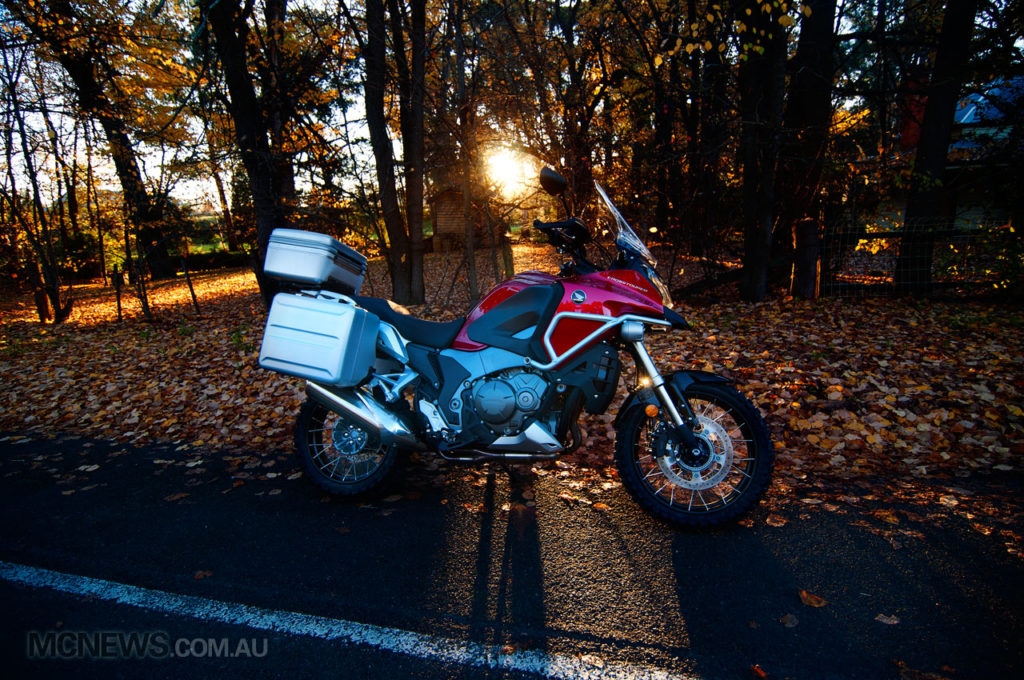
It does boast 180mm of ground clearance, sturdy spoked rims and handguards, but like all machines of this genre, much work is needed for it to be turned into a serious off-road mount.
Honda does offer modest optional crashbars (dubbed cowl ornaments to satisfy lawyers as they are not crash tested to the various standard required around the world), as fitted to our test bike; but for serious protection buyers will need to turn to aftermarket manufacturers for a sturdy full-length bash plate to protect the undercarriage, crankcases and shock linkage, likewise for the radiator. I would also replace the mirrors with smaller independently-mounted items for serious adventures as the standard items affix to the hydraulic brake and clutch reservoirs, which is not ideal in the event of a tip-over. Every other machine on the market also requires similar modification to be fully prepared for serious off-road adventure so do not see this as a large blight on the VFR1200X per se, it is par for the proper adventure course. And with spoked rims and an engine that is almost impossible to stall, the VFR1200X does start from a fairly good base.
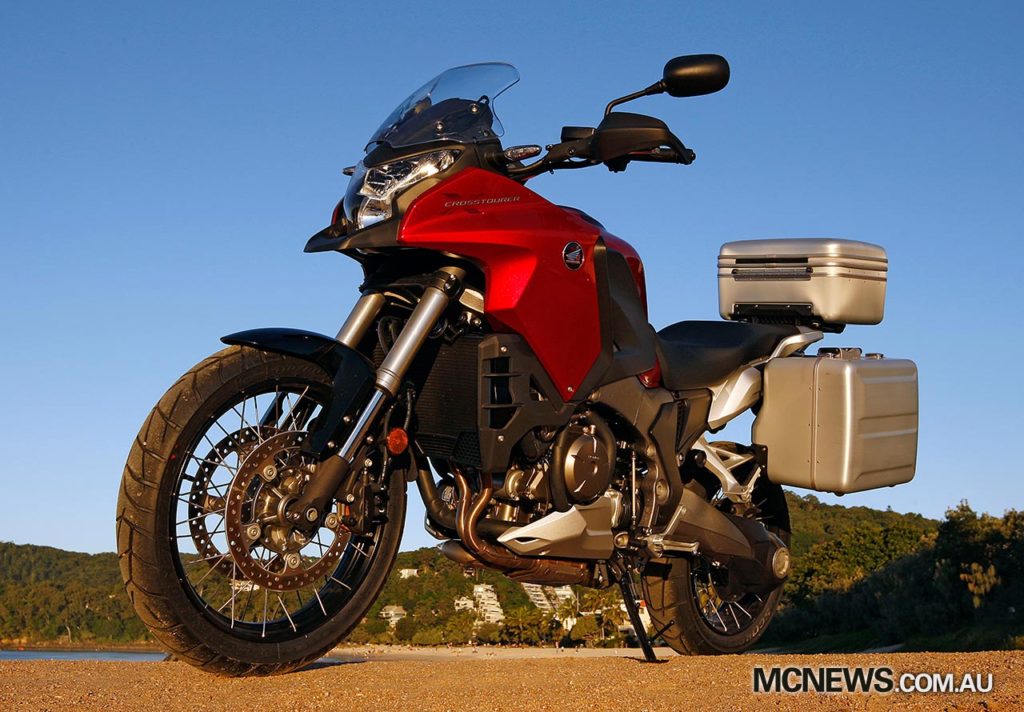
Taken from the VFR1200F sports-touring machine the compact v-four engine has been tuned for more low and mid-range torque at the expense of the donor machine’s thumping top end power. While a lot of people reading that line will roll their eyes back in their head (huge power outputs and pretty dyno charts are impressive on paper), on the road Honda have this engine absolutely spot-on for its intended purpose. It’s also more powerful than the majority of competitors and sweeter than all of them down low.
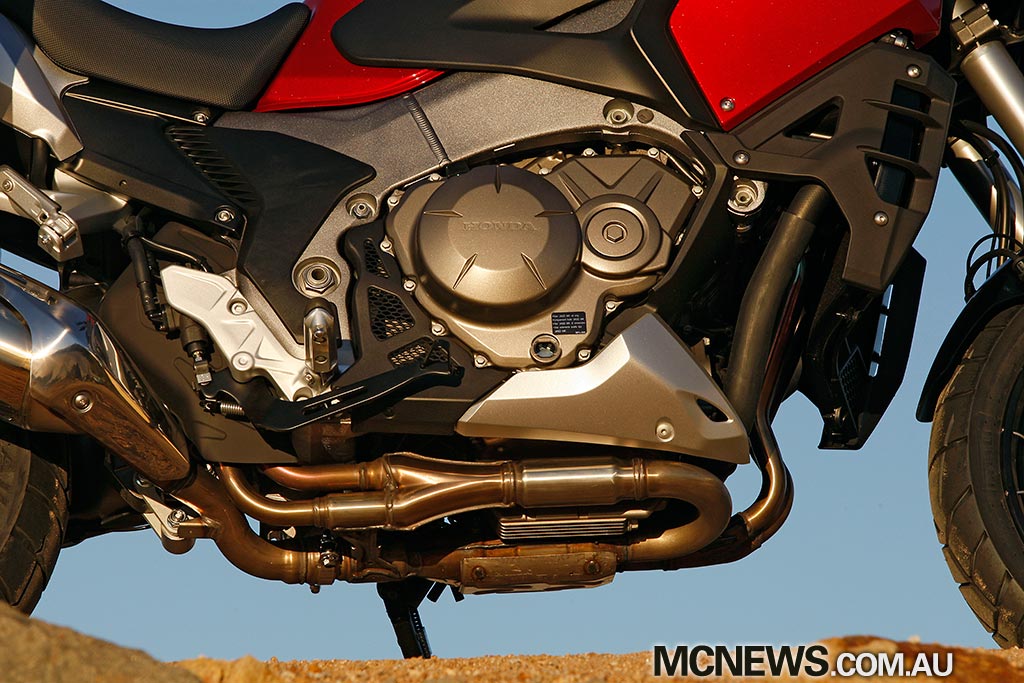
Off the bottom the response while strong, is also crisp, easy to control and is virtually impossible to stall. This is a huge boon for this style of motorcycle as virtually every low speed crash off-road is the result of losing momentum, generally through being too tentative, and a stall invariably ends with the rider and the bike on the ground after the front folds and the rider can’t hold the bike up. The key technique is of course, ‘when in doubt, throttle out’, but that is often easier said than done as we all lose our confidence from time to time, and a machine that will not stall in such situations can often save your bacon. Thumbs up.
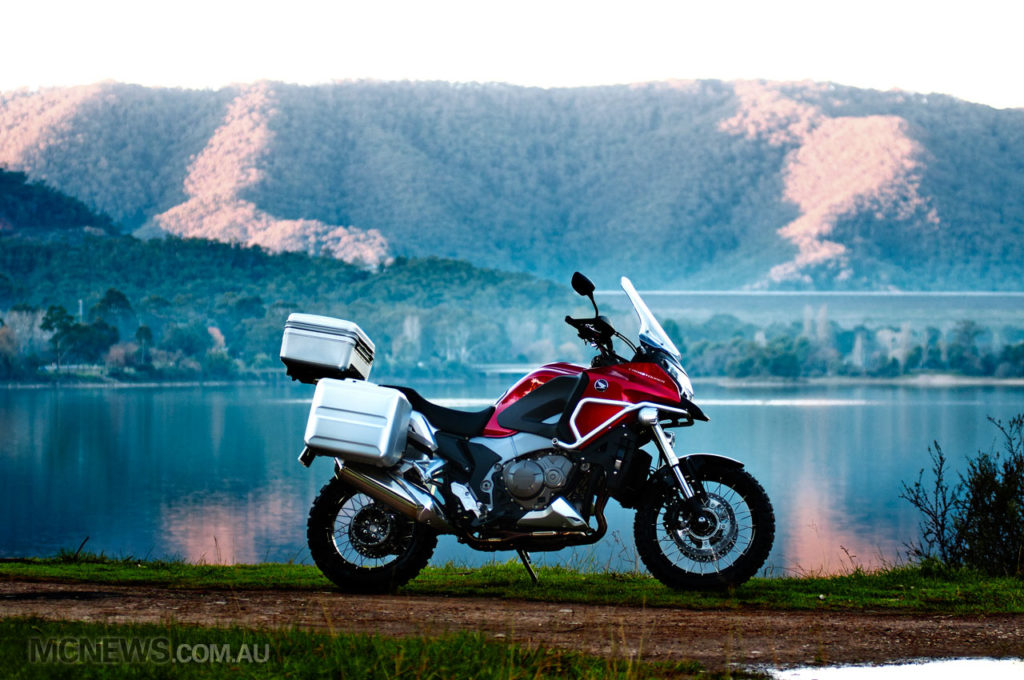
On the road the engine ticks a little over 3000rpm at 100km/h and is silky smooth. Strong highway overtaking urge is only a tweak of the wrist away. Slowing down for the suburbs I found myself negotiating whole towns – complete with roundabouts and 50km/h zones – without shifting down from top gear, then simply accelerating back to highway pace out the other side.
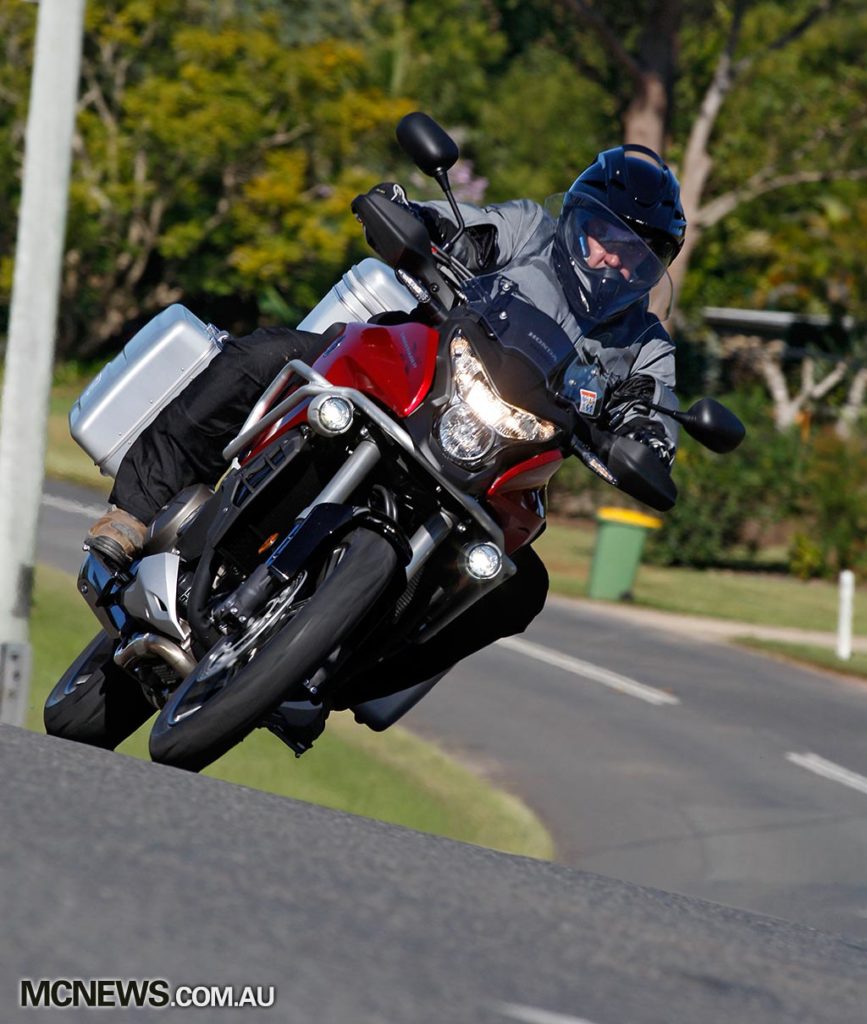
Sure, the top end has been curtailed severely in comparison to the VFR1200F, but I never once missed it during our recent 2000km stint with the VFR1200X. Any eagerness from a set of lights lofts the front wheel with ease, such is the bottom end stomp, and exploring the mid-range as you scythe from corner to corner is an enjoyable experience as you ride the meaningful surge of torque. Changes from the VFR1200F include longer intake tracts and different cam profiles to concentrate torque and response at lower rpm thus while the huge top-end power of the VFR1200F is foregone, I think it is a price worth paying as overall I prefer the VFR1200X donk.
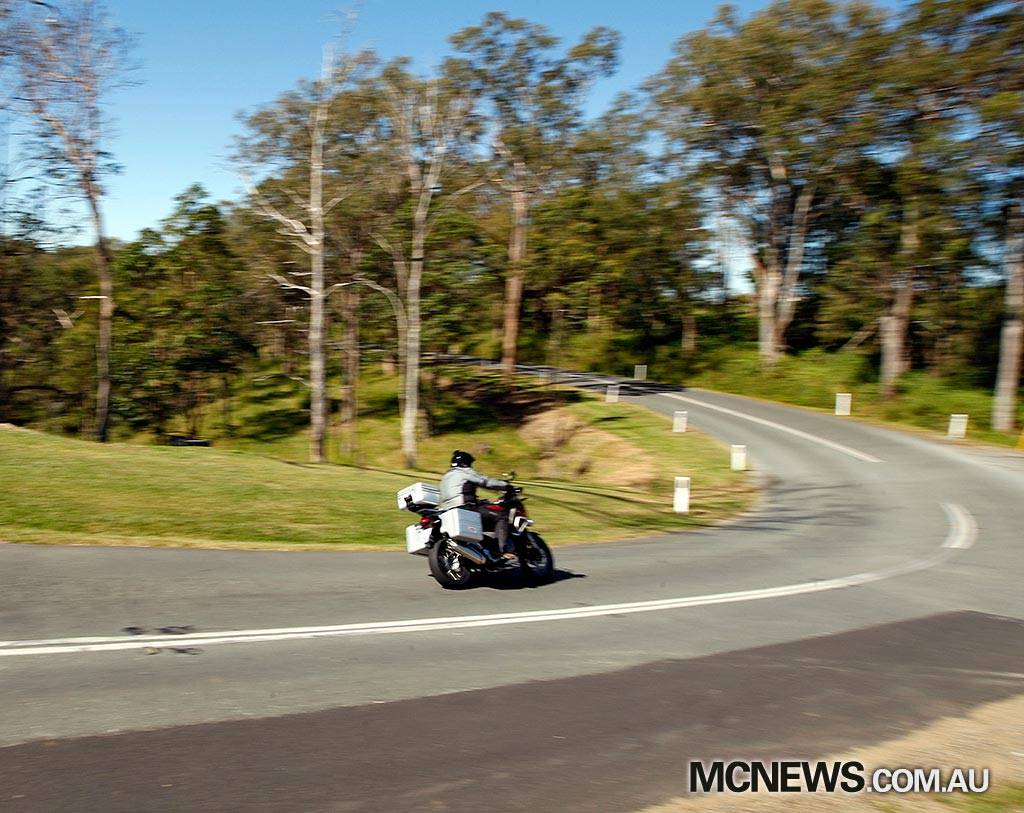
The only slight negative against the engine is the surprising lack of acoustics. When riding a grunty 1237cc v-four I would like to be reminded of that fact by a full-bodied sonorous concerto assault on my auditory nerve. The ADR fun police responsible no doubt. Luckily we are hanging onto the VFR1200X for some time yet and I hope to liberate some of that soulful v-four note via a visit to Mr Akrapovic. In defence of the VFR1200X there is a trace of a gruff intake roar when winding on the throttle but I want more v-four bark out the other end!
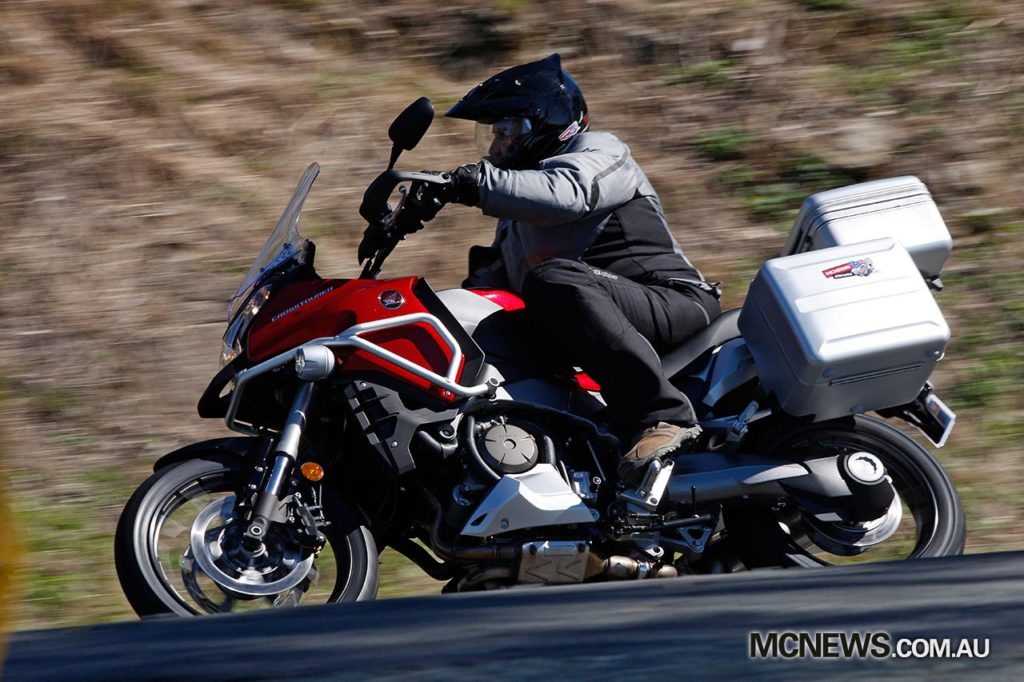
In the city the gearbox (wider ratios between 3rd, 4th, 5th and 6th than VFR1200F) can be a little agricultural on the first-to-second shift but otherwise is smooth. Shuffling up and down the upper gears is faultless. The clutch take-up did take a little getting accustomed to on the road as there is fair amount of travel, on the flip-side this will be welcome in treacherous conditions off-road. The shaft drive system is on the whole very smooth, but sometimes on pick up from a closed throttle some driveline lash is evident. This is the only small blight on the otherwise faultless low speed performance of the drivetrain and once understood can be largely ridden around.
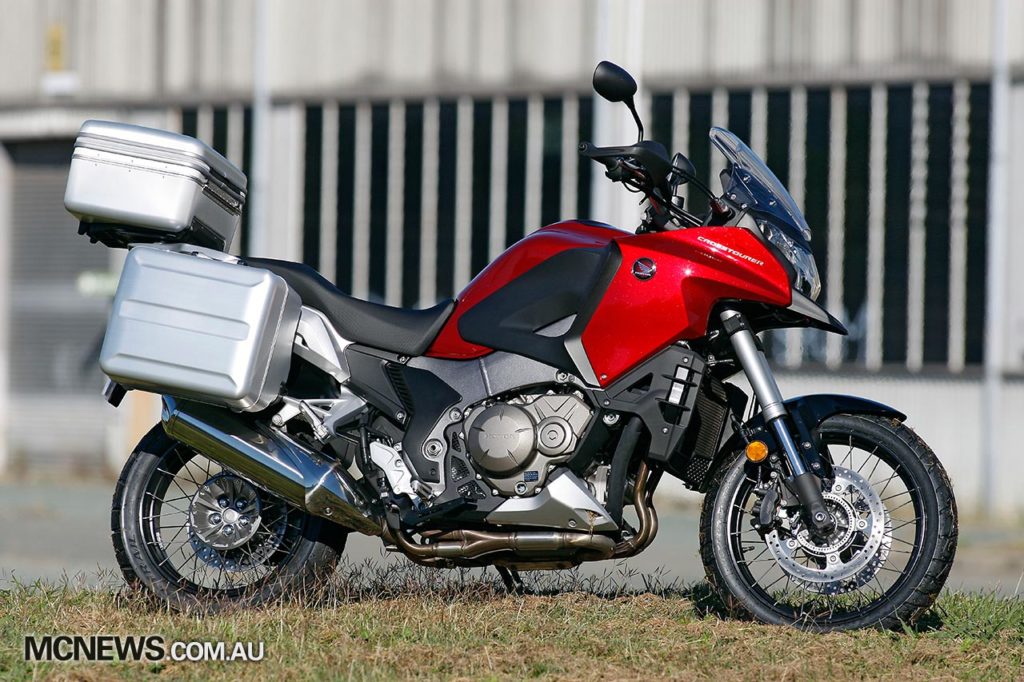
One of the primary concerns for any rider interested in this type of motorcycle is comfort and here the VFR1200X certainly excels. Numerous times I went 300km between stops, including one 364km stint, only stopping for fuel before getting straight back on the road. I even managed the old 1000 mile (1600km) in a day ‘Ironbutt’ style ride without coming out the other side much worse for wear. After the Sunshine Coast Hinterland launch ride to Kenilworth I left the assembled journo throng to set out on my own to Melbourne. Less than 30 hours later, including an overnight stop in Taree, I was enjoying a beer in Melbourne.
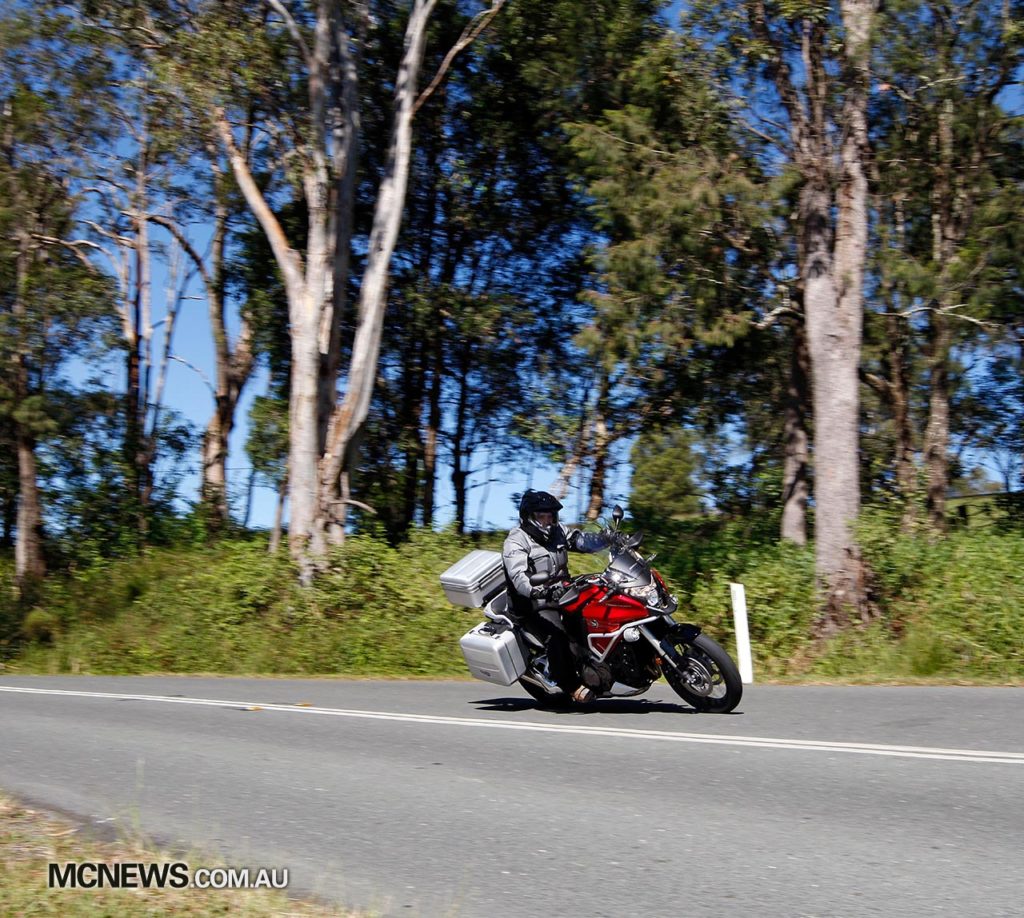
Our test bike was fitted with the optional ($196.90) touring screen. No forward, side or reverse buffeting was evident at any stage. Perfect. I also found the seat spot on, the best in this category. It feels a little too soft at first but the padding holds up on the long haul and it doesn’t grow teeth.
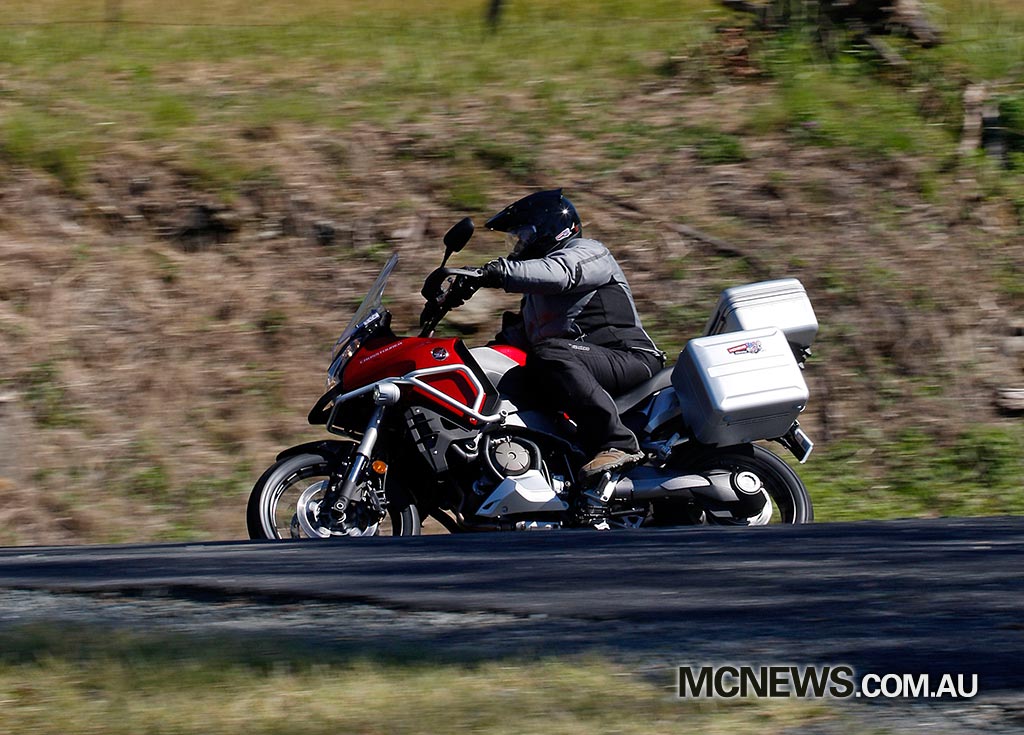
Also fitted to our machine were the optional fog lamps ($328.90), heated grips (328.90), panniers ($1485) and top-box ($792) rig. In photos the panniers look fairly basic but they prove well designed, waterproof and light. The jewel in their crown however is the integrated mounting system that does away with the need for unsightly racks and associated hardware. I love this thorough approach to design. Another huge benefit that shouldn’t be understated is how close to the centre-line of the machine the panniers are kept. In this regard they are much better than all the aftermarket hard pannier solutions I have tested, including the incredibly popular SW Motech and Hepco Becker arrangements. The Honda panniers sit that tight to the machine that they will work well off-road, I have no plans to crash test them but will say that in the flesh they are much more impressive than photographs might suggest. Of course for serious off-road sojourns you can’t go past close fitting soft (thus crash worthy) luggage, but as far as hard luggage goes the Honda gear is excellent.
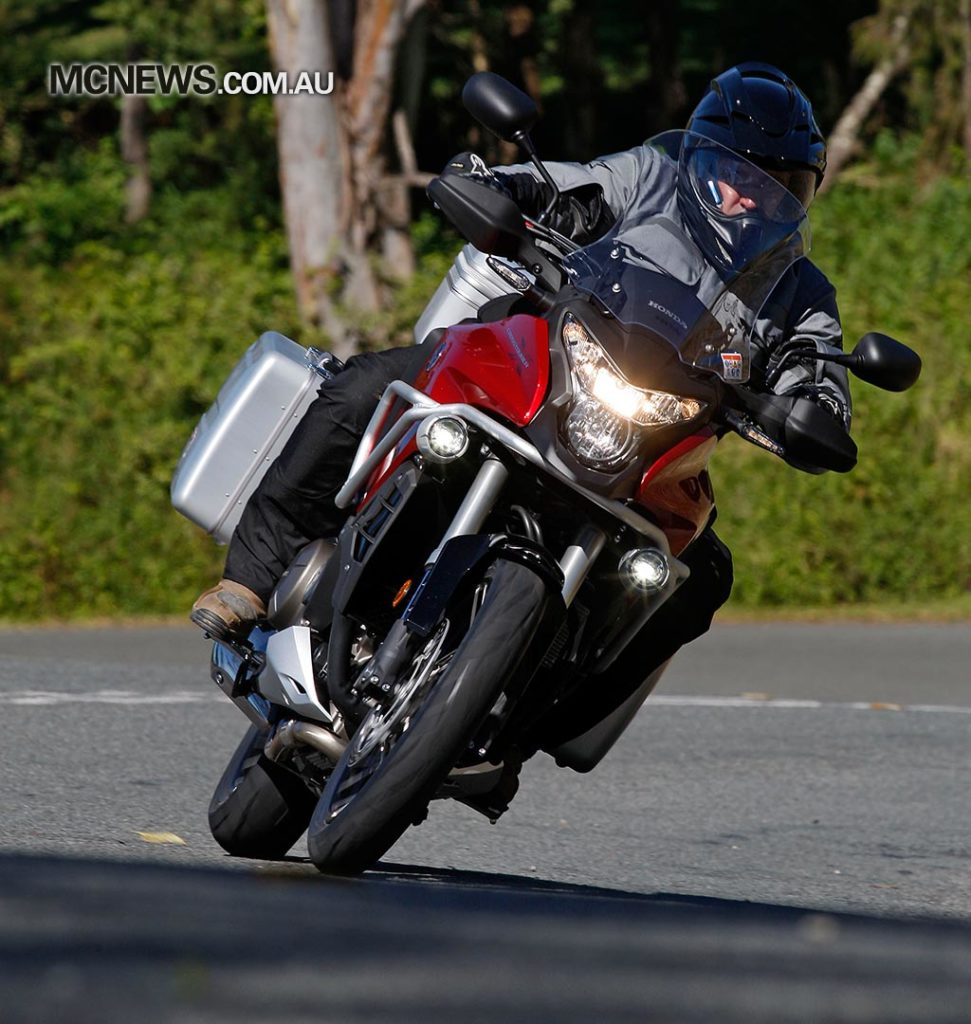
The heated grips certainly came in handy and I appreciated the more expansive spread of light emitted by the fog lamps. Oncoming traffic was not quite so appreciative, however, as while their aim looked perfect for me, it must have caused other drivers problems as I was flashed dozens of times from drivers presuming I had high-beam on.
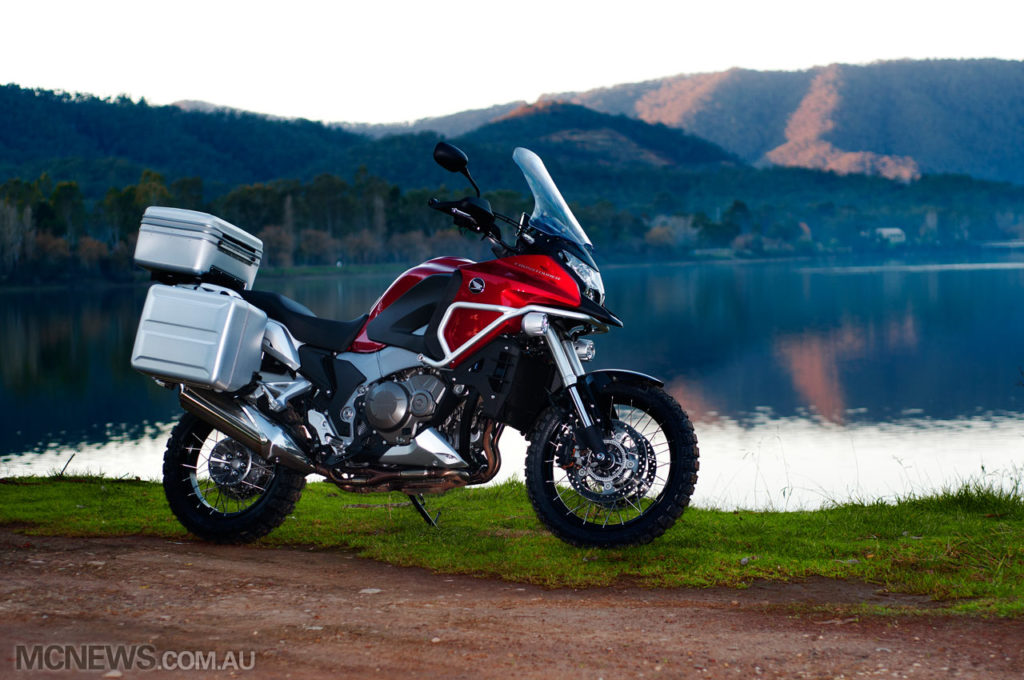
An oversight on a premium adventure-touring machine such as the VFR1200X is the lack of a standard 12V outlet. An extra $104.50 for the optional outlet (plus $33 for the wiring harness) scores you one but it is under the seat and thus certainly not as handy as the standard outlet located on the dash of most comparative machines. Riders looking for GPS options will have to look to the aftermarket for navigational aids. The fly by wire throttle would seemingly make the fitment of cruise control a simple process but Honda have chosen not to implement this functionality on the VFR1200X.
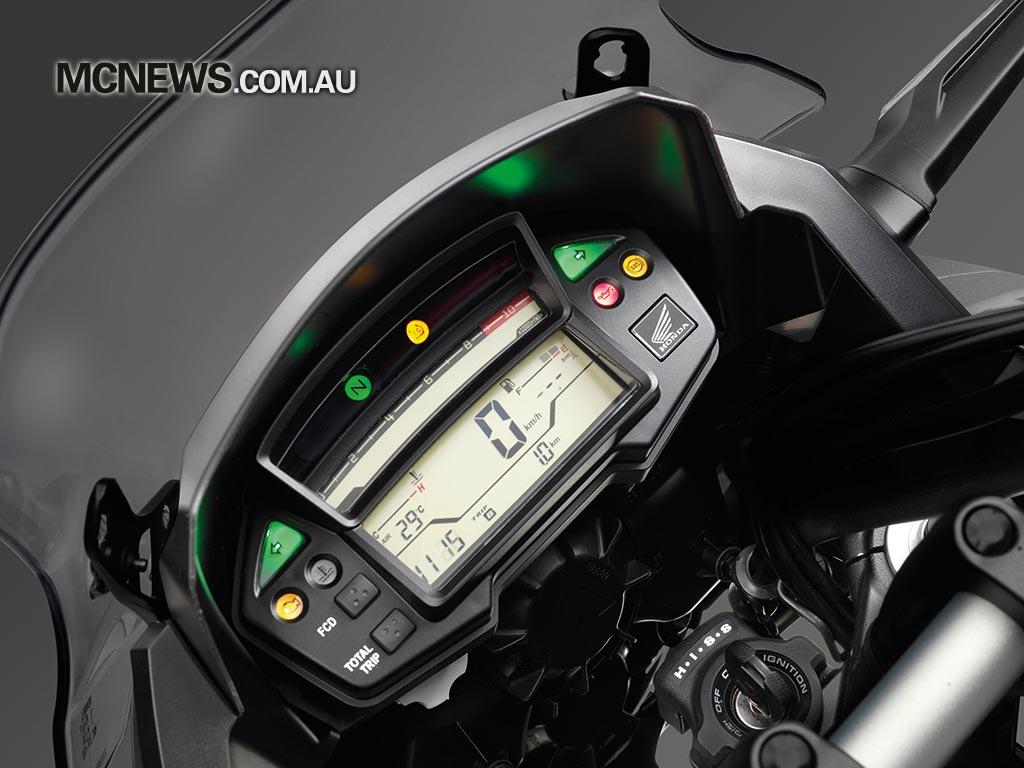
On the suspension side of the equation Honda have fitted the VFR1200X with inverted forks and a single shock. Preload is adjustable via handy wheel at the rear while a spanner is required to adjust the forks. The rebound damping adjustment screw is not easily accessible on the bottom of the shock but is easily set on the forks.
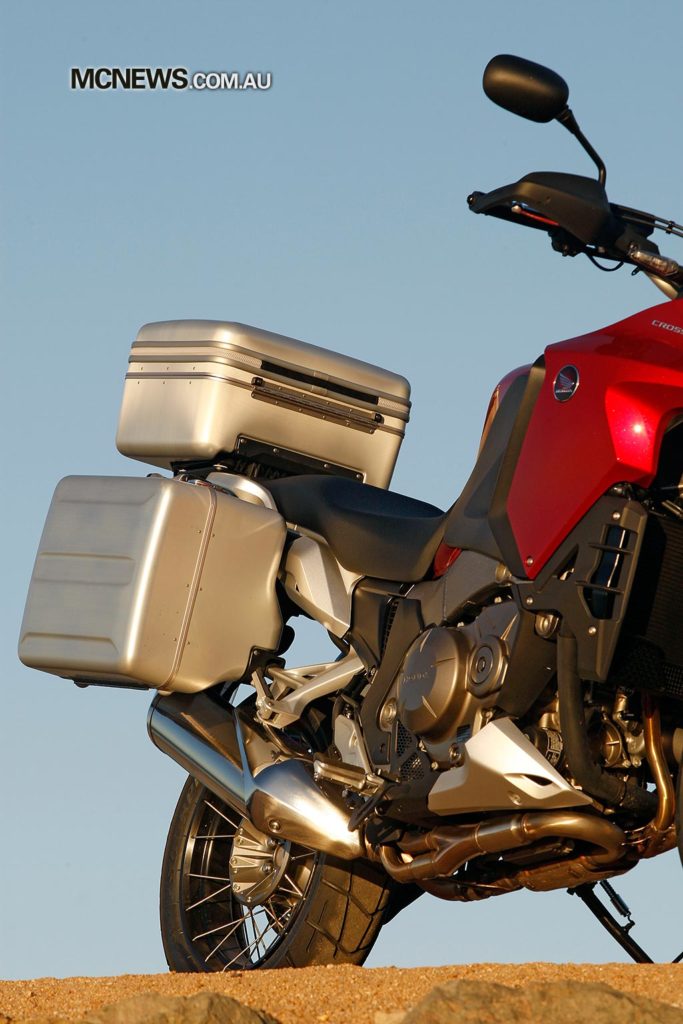
I did not get on with the forks at all during our initial hour together. The culprit I believe was excessive stiction (resistance preventing the forks moving freely through their stroke) as the forks pattered over road imperfections. 100km later things had improved markedly as the suspension started to bed in and work properly enough to have me really enjoying the ride. A lack of very fine small-bump response is still evident 2000km later however. I will endeavour to dial this trait out during our extended time together.
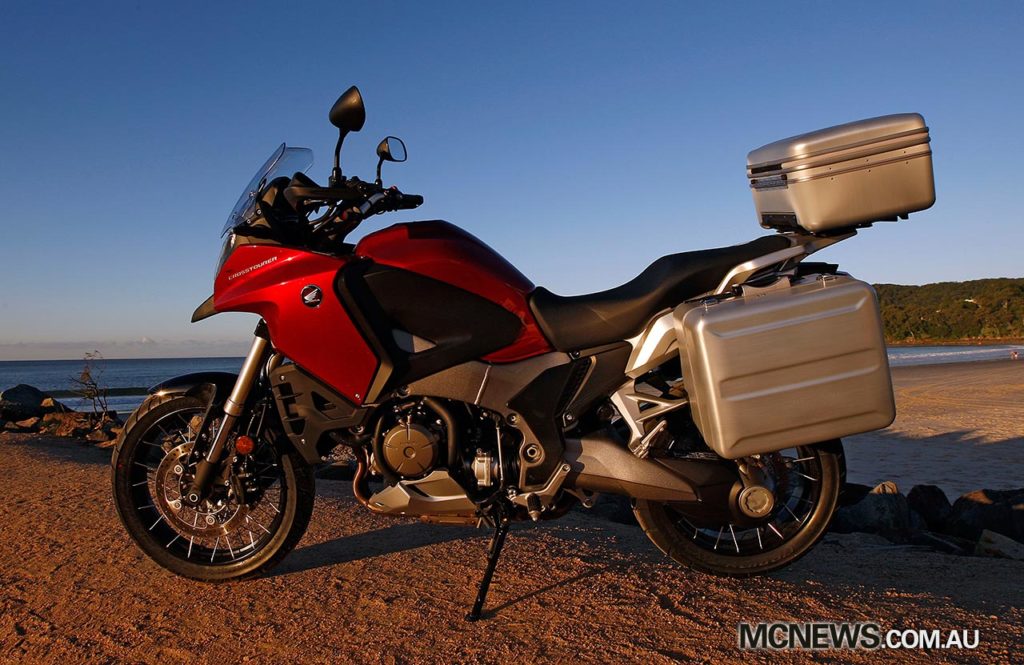
The steering is sublime. You would expect nothing less from Honda, always the benchmark in this area. Changes of direction also see the VFR1200X exhibit a surprising level of agility in reward for very little effort at the bars. Especially considering the off-road oriented 19” front rim.
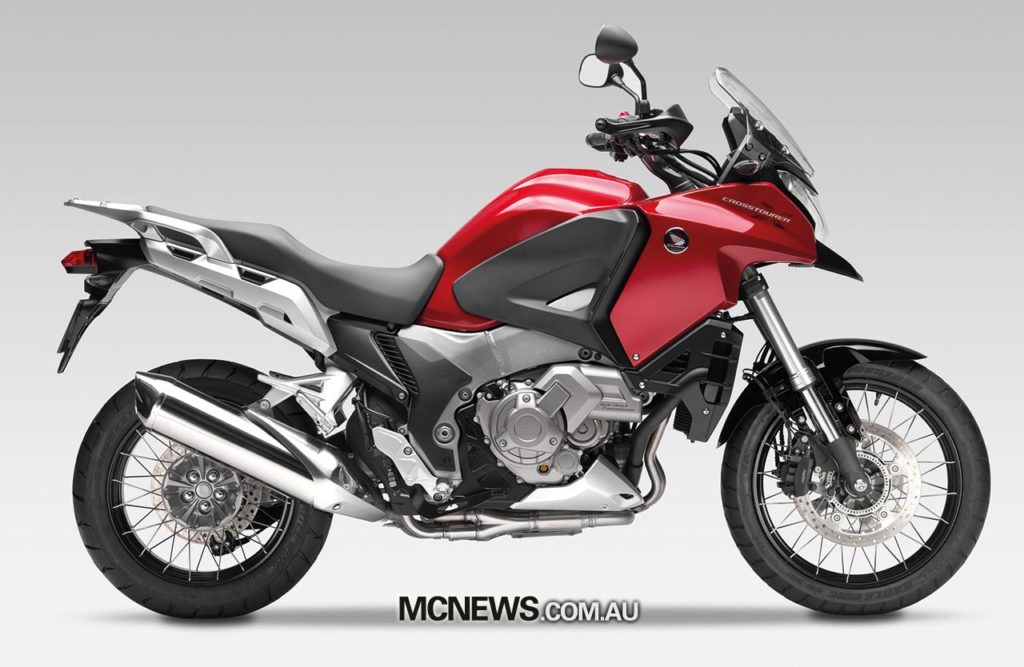
At the rear the single shock proves better controlled than the VFR1200F sports-tourer machine it stems from. I am yet to turn a wheel on the VFR1200X without it being loaded to the gunnels with clothes, shoes, computer, cameras and the associated peripherals that I was carrying after coming straight from a Perth ASBK gig to the Queensland launch of the CrossTourer. Thus loaded the bike felt a little heavy when lifting off the sidestand the first time but never again did the weight of the machine, or luggage make itself felt. Fully loaded for cross-country style adventures the VFR1200X is a better mount than its VFR1200F stable mate. A machine that I am well accustomed with after covering 16,000km in 15 days shortly after the machine’s original launch two years ago.
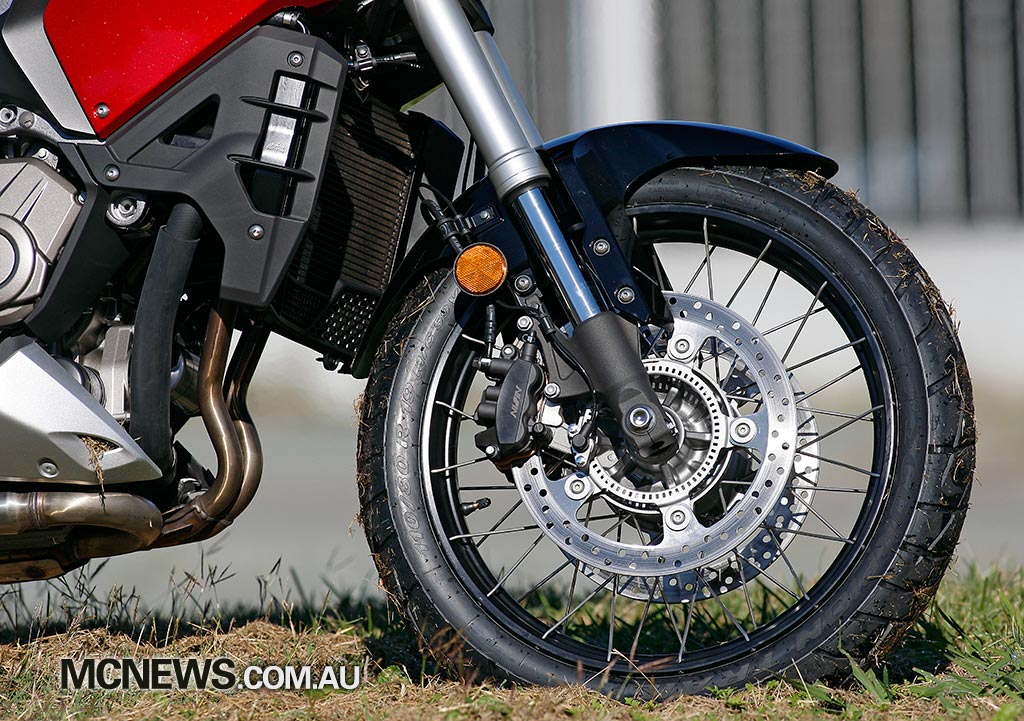
The brakes are extremely powerful and backed up by the excellent, but non-switchable, ABS system. The brakes are linked, whereby application of the rear brake activates a tad of front brake also. Misinformed control freaks will throw their hands up in the air and dismiss the benefits of such a system out of hand, but this control freak actually quite likes it. These systems have come a long way since the early days and any open-minded rider quickly comes to appreciate the advantages. Hardware consists of 310mm discs up front backed up by a generously sized 276mm rear.

The primary complaints are the lack of an ‘off’ button for the ABS system when venturing off-road, and that, unlike some competitors, the rear brake is not de-linked from the front when used independently. These ‘by design’ faults are only going to worry the off-road rider who likes to hit the trail with a bit of aggression. Soft off-road touring will not pose serious problems however I still feel that considering the real benefits of the linked brakes and ABS on road, the facility to easily deactivate the ABS and the linked nature of the brakes off-road is unfortunate. This is a deliberate Honda corporate policy, obviously due to some fear of litigation. I am sure Soichiro Honda would be turning in his grave, seeing decisions in the magnificent company he created being increasingly dictated by lawyers and beancounters rather than motorcycle riders and engineers.
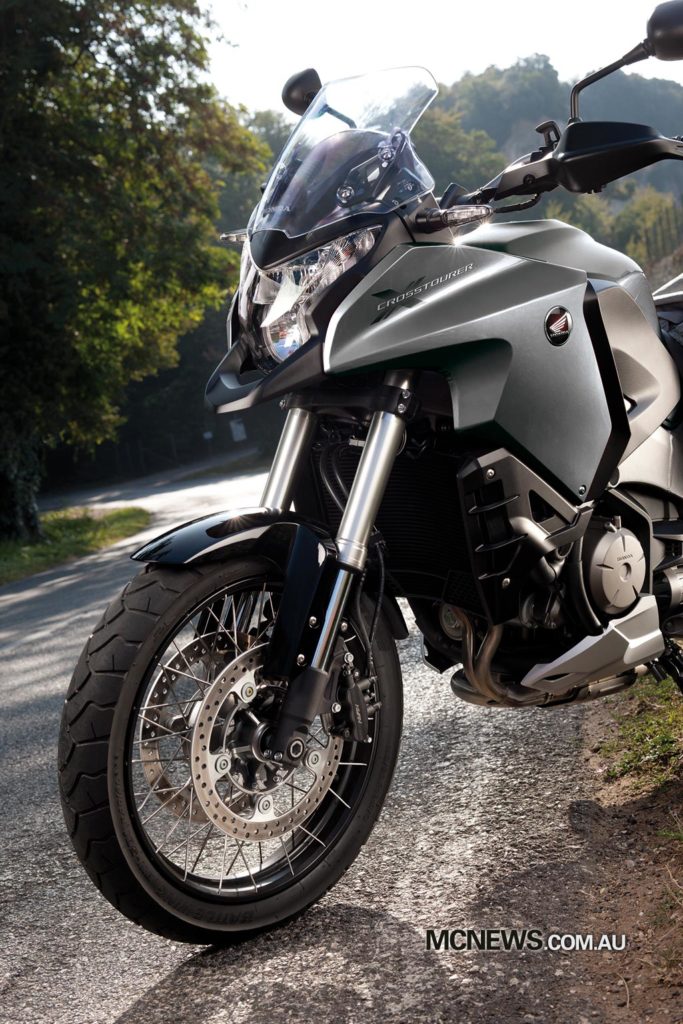
Somehow, Honda did manage to get the ability to turn traction control off past their lawyers. Hallelujah, and it can actually be switched on or off on the fly! There is however, no intermediate sport or off-road setting allowing for some degree of slip before cutting the slide or mono. This is an oversight, and one Honda could easily have catered for via simple software tweaks in the slide parameter tables so perhaps it is the lawyers also responsible for the ‘maximum intervention’, or ‘you’re on your own’ nature of the system.
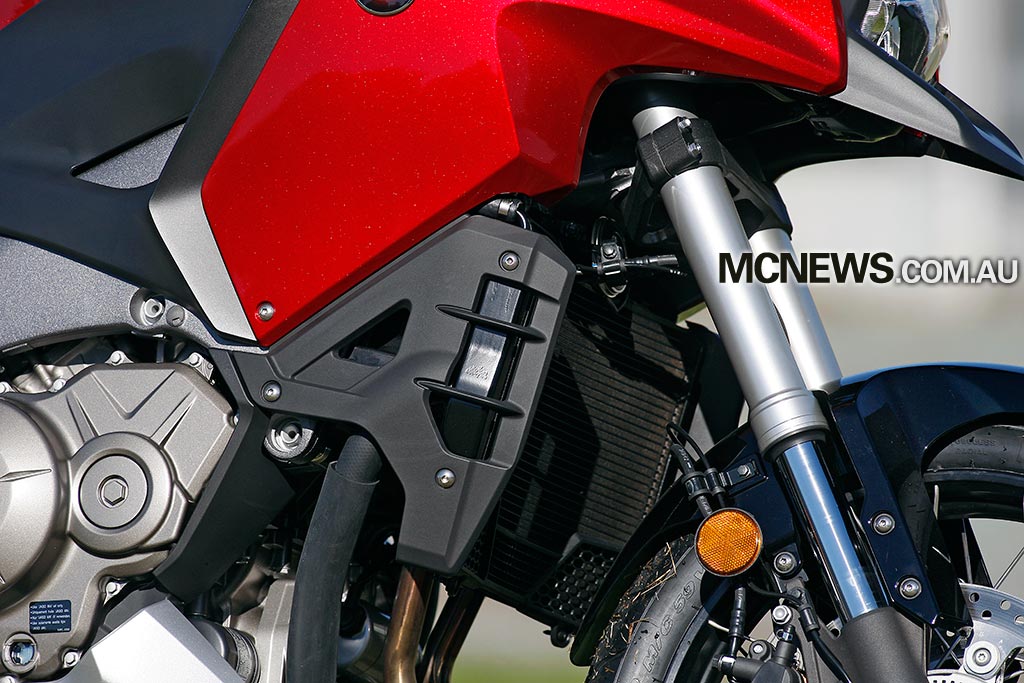
Okay, enough of me complaining about lawyers, let’s get back on track…
Instrumentation is excellent. The bar style tachometer is an okay compromise to free up the extra space for a larger LCD which is put to good use. Ambient and engine temps, a fuel gauge and clock, two tripmeters and an independent fuel countdown meter that activates when the engine management system calculates less than a 70km range is remaining. The trip computer also displays either instant or average fuel consumption in litres per kilometre. In a perfect world the different levels of functionality could be selected from the bar but the dash mounted buttons are at least easy to use with a gloved hand on the fly.
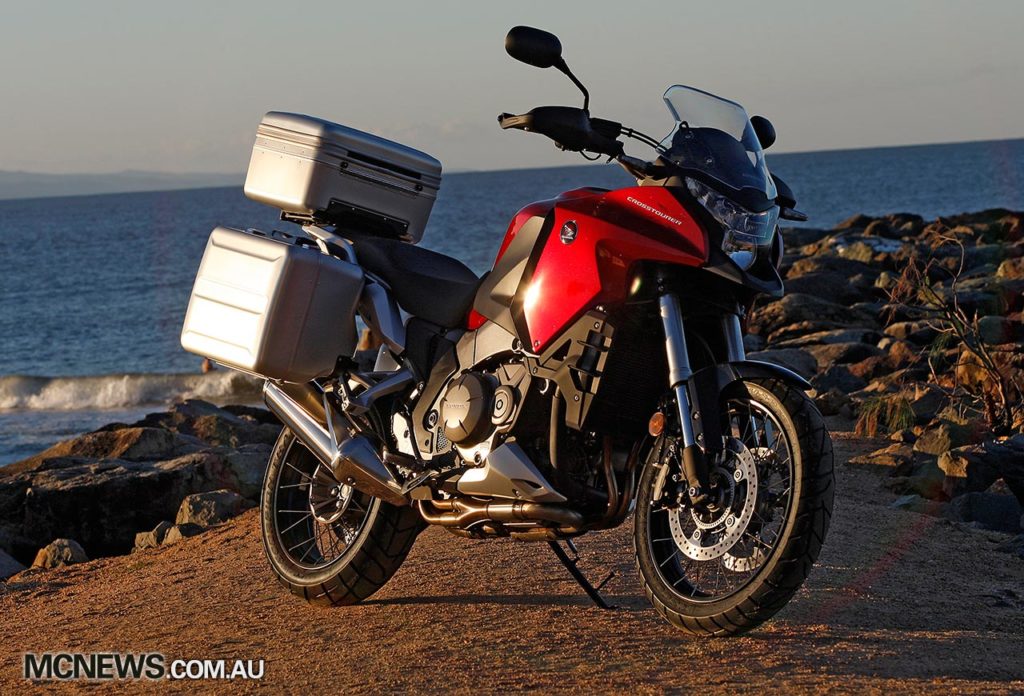
Overall the VFR1200X is proving an excellent touring machine. Exceptional comfort levels combine with a grunty engine (the v-four perhaps the finest donk in this class of motorcycle), and fairly taut chassis to provide an excellent package for the competitive $19,990 (plus on roads) list price. It’s great to see Honda Australia once again getting serious about offering good value for money. The shaft drive and 12,000km service intervals should also keep ongoing running costs minimal.
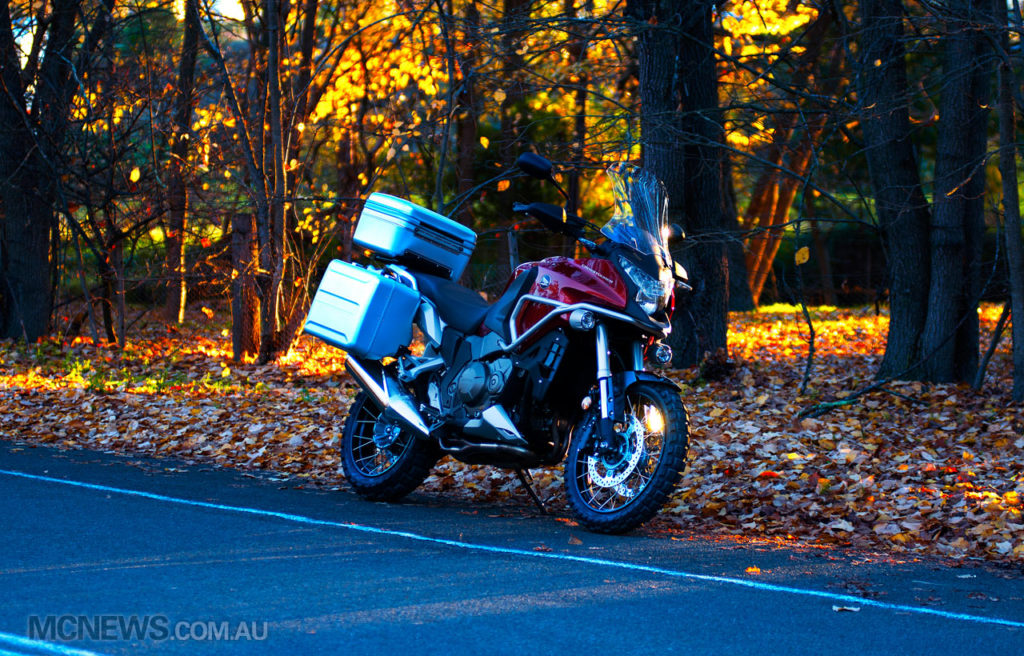
The standard fitment Pirelli Scorpion Trail tyres we know from experience on other machines actually perform better off-road than you expect and if not tortured too badly on the road can last as long as those service intervals. Of course serious off-road sojourns call for the fitment of Metzeler Karoo tyres or similar but in return for off-road grip the trade-off is of course very limited life. On a big off-roader like the Cross Tourer an open tread rear can be demolished in 1000km without trying too hard.
With the optional bar work and fog lights I reckon the VFR1200X looks pretty darn good. The outstanding highlights of the package for me are the well-tuned engine, amazing comfort and excellent luggage system that really keeps the machine slim and agile even when fully loaded.
We are hanging on to the VFR1200X for a while and will update you further after more adventures together, but my recent 2000km sojourn on the machine suggests that it is a cross-country touring machine par excellence. The Crosstourer is a mount that I would not hesitate on riding around Australia on tomorrow.
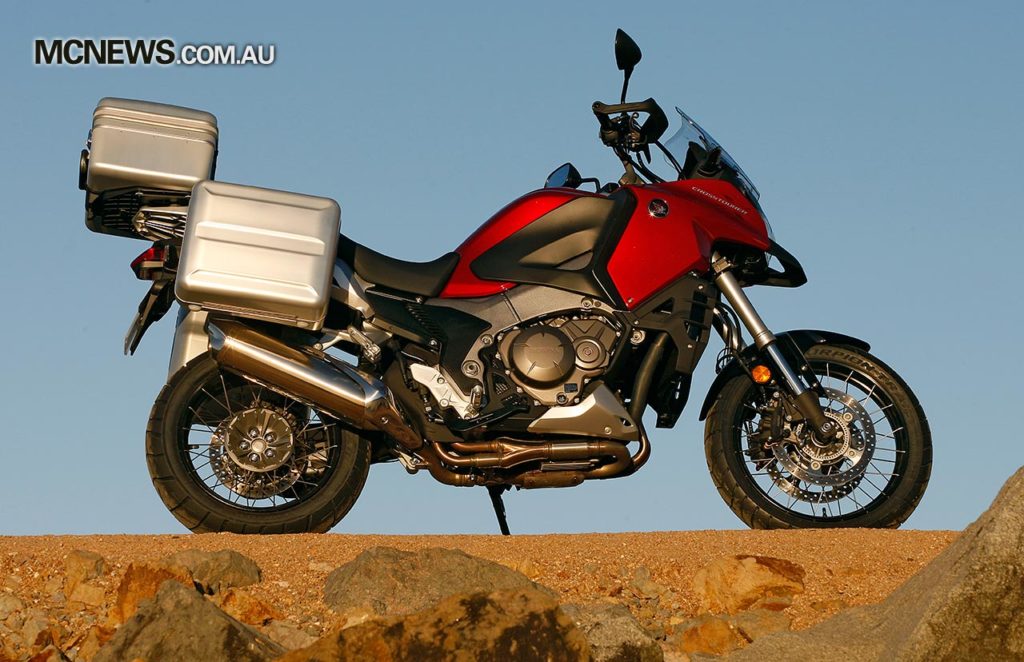
Specifications – Honda VFR1200X Crosstourer
- Displacement – 1,237cc
- Engine Type – 76° v-four
- Bore x Stroke – 81 x 60mm
- Compression Ratio – 12: 1
- Induction – EFI
- Transmission – Six-speed
- Final Drive – Shaft
- Dimensions (LxWxH) – 2,285mm x 915mm x 1,335mm
- Wheelbase – 1,595mm
- Seat Height – 850mm
- Ground Clearance – 180mm
- Fuel Capacity – 21.5 litres
- Kerb Weight – 275kg
- Rake (Caster Angle) – 28°
- Trail – 107mm
- Front Suspension – 43mm telescopic fork, preload and rebound adjustable
- Rear Suspension – Pro-Link single shock, hydraulically assisted preload adjustment, rebound
- Front Brakes – 310mm discs, combined ABS
- Rear Brake – 276mm disc, combined ABS
- Warranty – Two years, unlimited kilometres
- RRP – $19,990 plus on roads
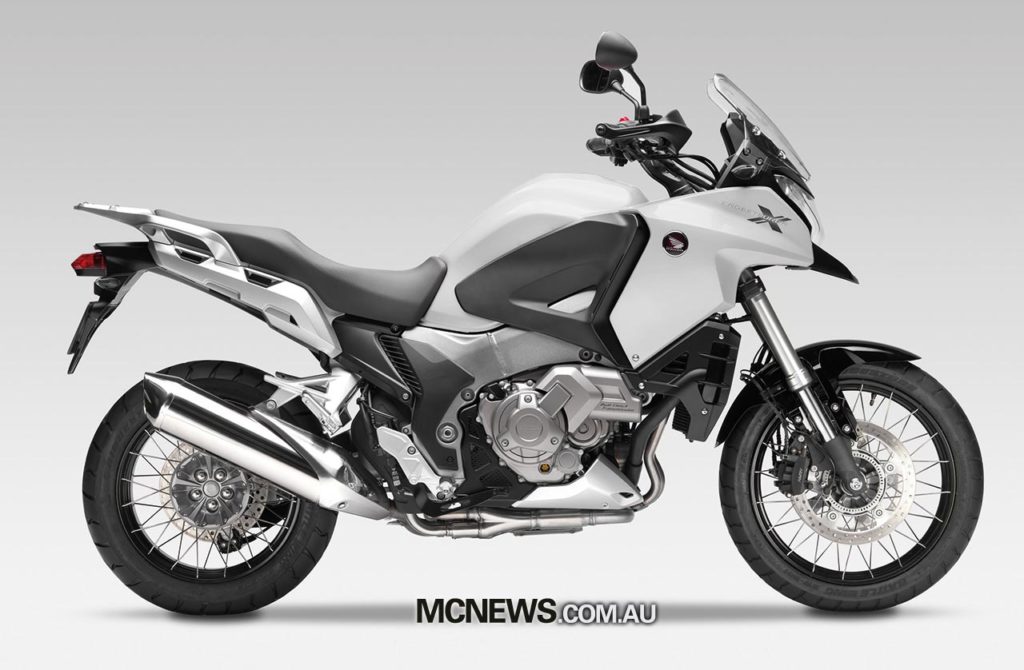
Positives
– Excellent engine
– Supreme comfort
– Excellent optional integrated luggage
– Competitively priced
– More agile than you expect
Negatives
– Fork small bump response not supple enough
– ABS not switchable, combined brakes not ideal off-road
– A sport setting for traction control would be nice
— Will be a little tall for some
NB: The VFR1200X will soon also be available in a dual-clutch semi-automatic guise with more features than the system first launched on the VFR1200FD.























